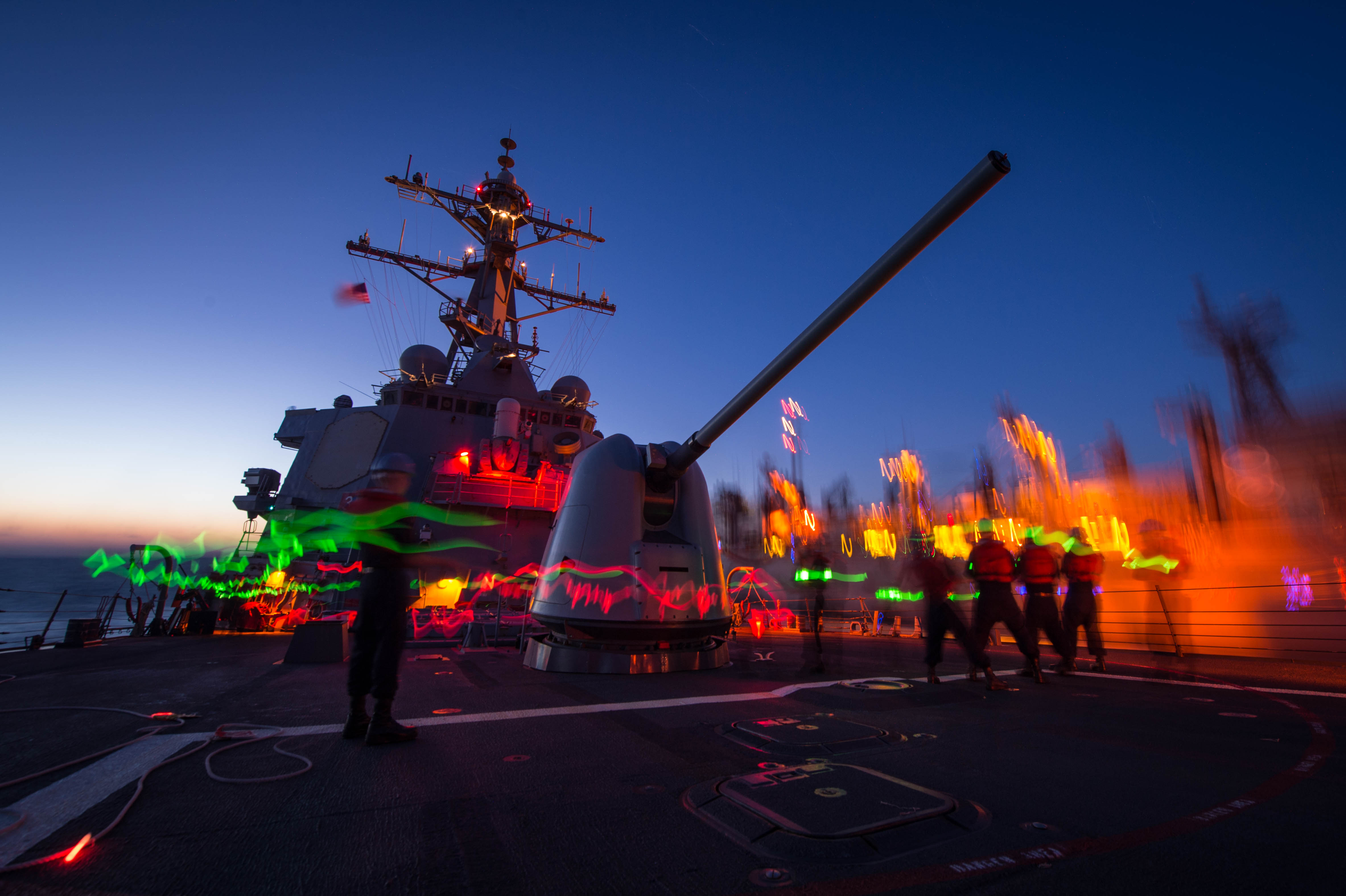
This is the final version of this post.
PENTAGON — The Department of the Navy’s Fiscal Year 2017 lower-than-expected budget submission follows closely with an overall Department of Defense drive to build higher end warfighting capabilities — but at a cost, according to budget documents released on Tuesday.
Citing increased advanced military development by Russia, China and continued provocative action by North Korea, Pentagon officials said the Navy’s smaller budget is directed toward developing more weapons and systems designed to take on advanced potential adversaries.
The Department of Defense wide $582 billion submission reflects “what we consider to be the most significant shift in the future security environment, and that is a return to an era of great power competition,” Deputy Secretary of Defense Bob Work said on Tuesday.
“Today, we are faced by a resurgent, revanchist Russia and a rising China. Both are nuclear-armed powers. Both are fielding advanced capabilities at a rapid rate. Both are permanent members of the U.N. Security Council, and both take issue with some aspects of the principled international order that has preserved stability and enabled the peaceful pursuit of prosperity for decades.”
The DoN’s share of the FY 2017 budget — $165 million — is 3.5 percent less than last years spending projections and down two-and-a-half percent from the FY 2016 budget submission totals. The service fells it can meet its obligations set out in the 2014 Quadrennial Defense Review “but with risk,” according to a Navy overview of the budget.
“Today’s budget environment is forcing tough choices but must also inspire new thinking as we seek to achieve balance,” Chief of Naval Operations Adm. John Richardson said in a statement to USNI News.
“The margins of victory are razor thin, and only the team that fights for every inch wins. Our budget request supports this urgent business.”
The $164 billion DoN request — $155 billion in the base budget and $9.5 billion in Overseas Contingency Operations (OCO) fund — codifies the Secretary of Defense Ash Carter anticipated 12-ship trim of the Littoral Combat Ship program, moves ahead with new anti-ship missile programs and continues a drive started last year by Congress to shore up the overused and aging aviation assets to fight off a looming strike fighter shortfall.
Ultimately the high tech initiatives and patching up the Navy’s aviation shortfalls are paid for by not only the LCS reduction but also drastic cuts to DoN military construction programs, trims in ship operations and a drop in Navy personnel by about 6,800 sailors from last year.
The FY 2017 budget also marks the start of advanced procurement of the Navy’s massive $100 billion Ohio-class ballistic missile submarine replacement program (ORP) ahead of the first-in-class boomer purchase in FY 2021.
Aviation
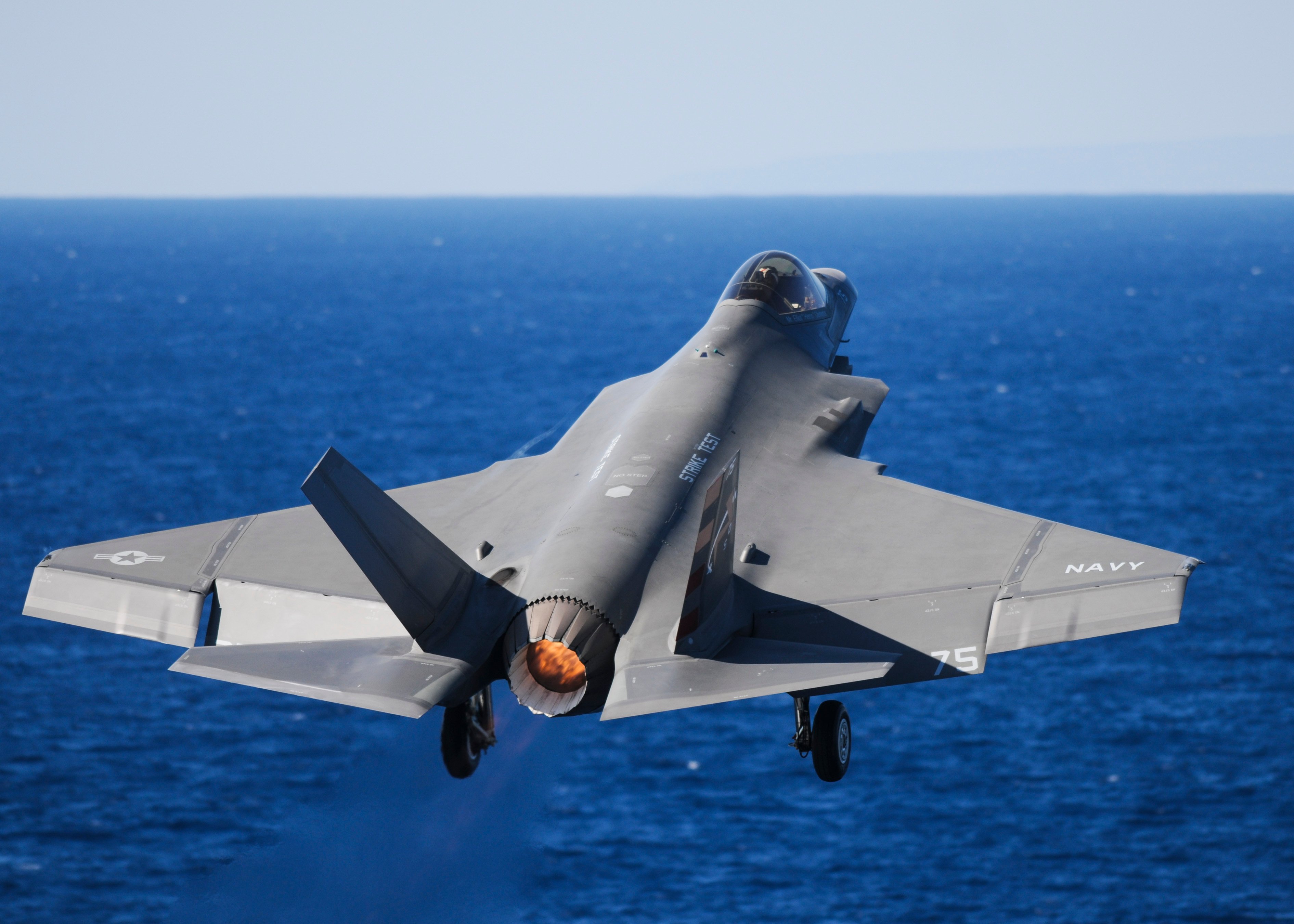
The Department of the Navy is asking for $14.1 billion in aviation procurement for a total of 94 new aircraft across the Navy and the Marine Corps.
The DoN wants to spend $2.92 billion on the Lockheed Martin F-35 Joint Strike Fighter program – split between $2.03 billion for 16 of the Marines F-35B short takeoff and vertical landing (STOVL) variant and $890 million for four of the Navy’s F-35C carrier JSF.
Over the future years defense plan (FYDP) the Navy is poised to buy 16 Boeing F/A-18 E/F strike fighters – two this year from OCO to replace unexpected aircraft losses and 14 in FY 2018. Combined with 12 fighters Congress inserted in the FY 2016 omnibus bill – part of the Navy’s unfunded requirements list – the total will add 30 aircraft to the Navy’s combat aircraft rolls.
The budget also accelerates a buy of 11 Boeing P-8A Poseidon maritime surveillance aircraft for $1.94 billion in FY 2017 – 30 total for the FYDP – and six more Northrop Grumman E-2D Advanced Hawkeye that provide air radar coverage for the Navy’s carrier strike groups (CSG) for $916 million.
Both aircraft are seen as key assets for the Navy as it plans for more aggressive adversaries – particularly in the Western Pacific – with the P-8As oriented toward anti-submarine warfare (ASW) and the E-2D providing the radar coverage and targeting information for future networked carrier strike groups (CSG).
The Navy is also asking for $89 million for the development of the Carrier Based Aerial Refueling System (CBARS) – the Navy’s follow-on program born from the restructure of its contentious RAQ-25 Unmanned Carrier Launched Surveillance and Strike (UCLASS) program. The funding line is down significantly from the $434 million UCLASS ask in FY 2016.
Shipbuilding
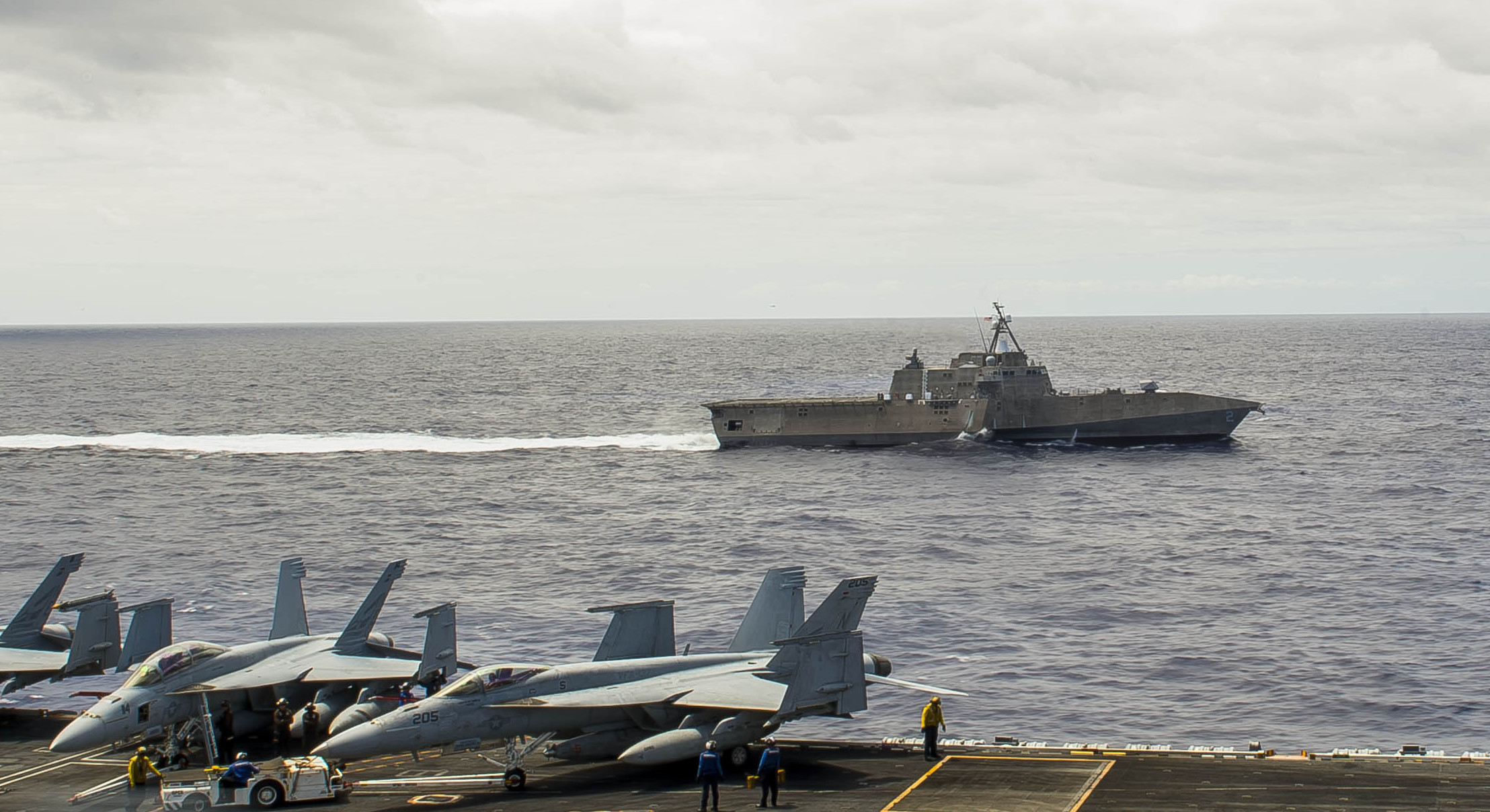
The truncation of the Littoral Combat Ship and its follow-on frigate program from 52 to 40 – revealed in a leaked December memo from Ash Carter to Secretary of the Navy Ray Mabus – forced the Navy to retool its shipbuilding budget in a scramble weeks before the budget submission.
The Navy was able to convince big Pentagon for the service to buy two Littoral Combat Ships for $1.1 billion – vice the lone FY 2017 ship Carter called for in his memo – in an effort to balance competition between Freedom-class (LCS-1) builder Lockheed Martin and Independence-class (LCS-2) builder Austal USA. The buy sets a hull down select in FY 2019 for the final frigate design, Navy officials said. Over the five year FYDP, the Navy is projecting to buy seven LCS which is in line with Carter’s mandate.
Inline with the wider push for more high-end systems, the Navy is asking for two Arleigh Burke guided missile destroyers (DDG-51) a year over the FYDP starting with a pair of ships in the current budget for $3.2 billion. The FY 2017 destroyers will be the last two ships in the ten-ship FY 2013 block buy between shipbuilders Huntington Ingalls Industries and General Dynamics Bath Iron Works. A second ten-ship block buy is expected as part of the FY 2018 budget.
The service is also keeping up its two-a-year drumbeat with the Virginia-class attack submarine (SSN-774) program until Fiscal Year 2021 when the buy drops to a single boat in deference to the purchase of the first Ohio-class Replacement (ORP) nuclear ballistic missile submarine. The two FY 2017 attack boats will come in at $3.2 billion and the Navy is also asking for an additional $1.8 billion for advanced procurement ahead of a Fiscal Year 2019 block buy . The block will include one Block V boat with a Virginia Payload Module that will bring additional Tomahawk Land Attack Missile (TLAM) capacity in FY 2019 and two in FY 2020.
The new ORP boomer program starts advanced procurement this year with $773 million set aside for the effort. Additional research and development funding bumps the total ORP expenditure to $1.1 billion. So far the Navy is funding the program from its own shipbuilding coffers and is not making an appeal – yet – for money outside of its budget to be deposited in the National Sea Based Deterrence fund established by Congress in FY 2015 budget deliberations.
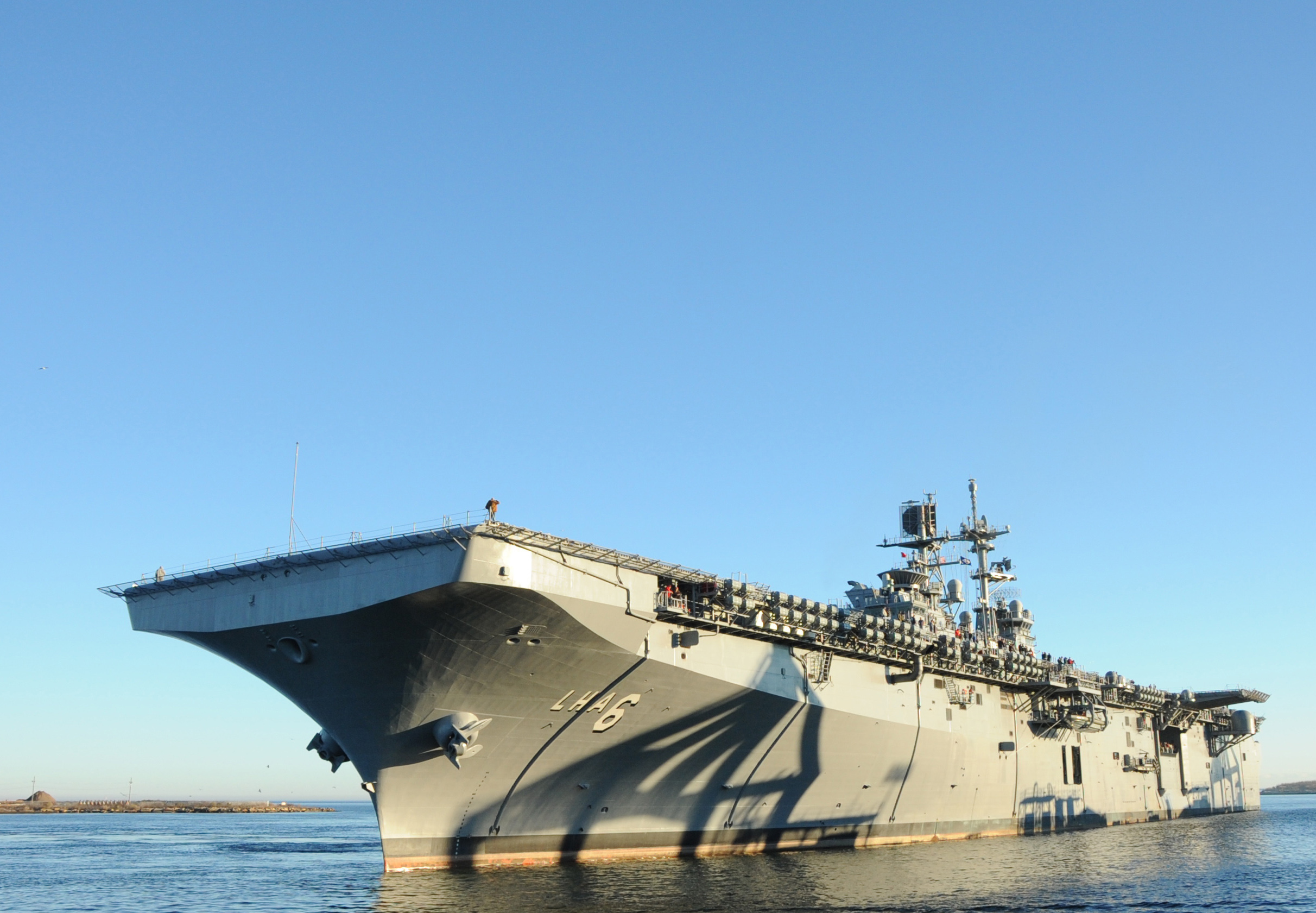
The Navy is also asking for $1.623 billion – following previous advanced procurement budget outlays– for a modified America-class (LHA-6) big deck amphibious warship that will include a well deck to give the ships the ability offload amphibious vehicles not resident on the aviation-oriented USS America and Tripoli (LHA-7) .
The yet-to-be-named LHA-8 will be built by Huntington Ingalls’ Pascagoula, Miss. shipyard or by General Dynamics NASSCO’s San Diego, Calif. yard as part of a competition between the two shipbuilders. One will build the new big deck, while the second will build six of the planned next generation John Lewis-class oilers (T-AO-205 formerly T-AOX). The Navy plans to build four Lewis-class oilers in the FYDP starting in FY 2018 which follows a ship procured in the FY 2016 budget.
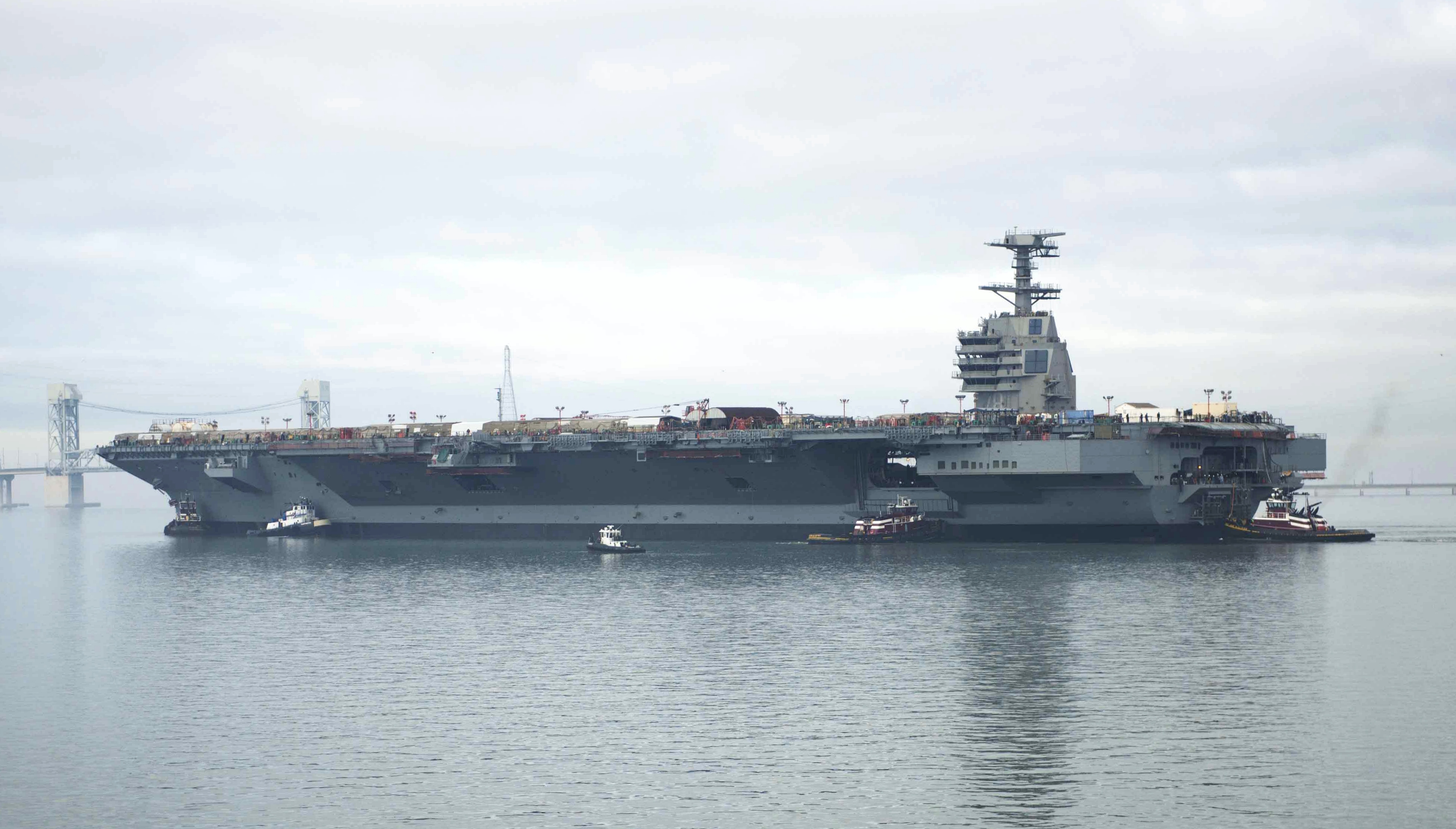
On the carrier front, the Navy is requesting $1.3 billion to continue the construction of the second Ford-class (CVN-78) nuclear carrier John F. Kennedy (CVN-79) and $1.4 billion for the third Ford – Enterprise (CVN-80). The budget also allots $1.7 billion for the second increment of funding for the estimated $4 billion refueling and complex overhaul (RCOH) of USS George Washington (CVN-73) – set to start in the fall – and sets aside $249 million for advanced procurement for USS John C. Stennis (CVN-74) RCOH.
New Weapons
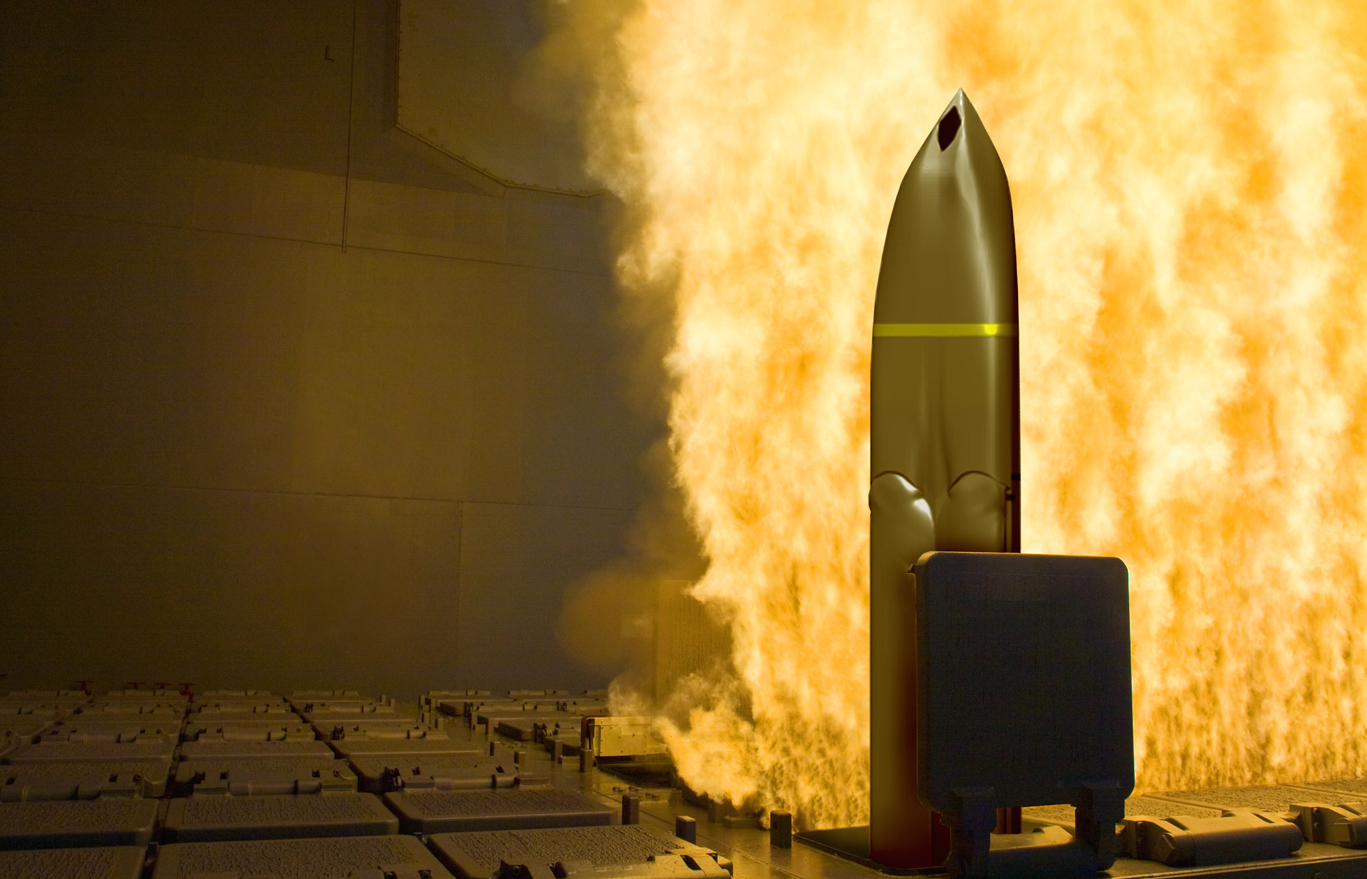
On his West Coast tour last week, Ash Carter told reporters the Navy is investing in a modification of its Raytheon Standard Missile 6 data linked anti-air weapon into a hypersonic anti-ship weapon – one of the first new offensive capabilities the surface Navy has seen in decades.
The budget includes funding for 125 SM-6s in FY-2017 for $501 million with a planned 625 total over the FYDP. The service is also asking to buy 100 Raytheon Tomahawk Land Attack Missiles (TLAM) for $186 million to raise the inventory to 4,000 ahead of the Navy’s next generation strike missile drive. The Navy is considering modifying the TLAMS to add an anti-surface capability and conducted experiments last year.
Also included in the budget will be the first buys for the Long Range Anti-Ship Missile (LRASM) – a DARPA developed, Lockheed Martin air launched anti-ship missile for the Navy platforms. The budget sets aside $29.6 million for the first ten missiles with 60 planned for the FYDP. The service is also asking for $252 million for Offensive Anti-Ship Weapons development for the OASuW Increment 2 follow-on to LRASM.
In electronic warfare, the Navy is asking for $76 million for research and development efforts for the Surface Electronic Warfare Improvement Program (SEWIP, pronounced: See Whip) for the surface fleet.
“These capabilities will improve anti-ship missile defense, counter targeting and counter surveillance activities,” according to Navy budget documents issued on Tuesday.
The Navy is keen on beefing up the abilities of surface EW and creating adaptations that could counter enemy weapons electronically rather than throwing projectiles at threats.
The service seeks to continue developing the Raytheon SPY-6 Air and Missile Defense Radar (AMDR) — set to be installed on the first Flight III Arleigh Burke guided missile destroyer — through its engineering manufacturing (EMD) phase. The $144 million request will set up testing of the radar at the Pacific Missile Range in Hawaii.





